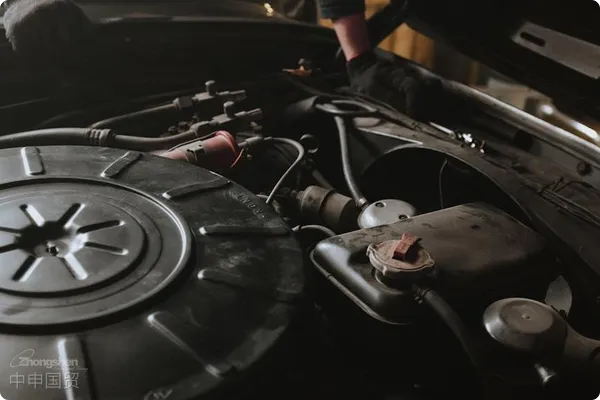- Shanghai Zhongshen International Trade Co., Ltd. - Two decades of trade agency expertise.
- Service Hotline: 139 1787 2118

Introduction: Market Potential and Challenges Coexist
As the global automotive modification market surpasses $40 billion (SEMA 2023 data), China's demand for imported modification parts leads emerging markets with an average annual growth rate of 15%. Based on 20 years of hands-on agency experience, this article provides an in-depth analysis of the core aspects of importing modification parts, helping businesses avoid typical trade risks worth millions of dollars.
I. Characteristics of the Global Refit Parts Market and Procurement Strategies
1.Regional supply chain landscape
- Performance parts: European and American brands (such as Brembo, KW, etc.) dominate the high-end market, with an average procurement lead time of 45-60 days.
- Exterior kits: Southeast Asian manufacturers (Thailand, Malaysia) have significant cost advantages, with FOB prices 30-40% lower than those from Europe.
- Electronic modification parts: Japan (HKS, Blitz) has high technical barriers, requiring special attention to JIS certification conversion.
2.Golden Rules for Supplier Screening
- Verify the authenticity of the VAT number (EU businesses can check through the VIES system).
- Please provide TUV or ISO/TS 16949 certification.
- During the on-site factory inspection, special attention should be paid to checking the CNC machining accuracy (the error value should be ≤0.02mm).
II. Three Core Risk Points in Customs Supervision
1.HS Code Classification Pitfalls
- Air suspension system: It is necessary to distinguish between HS code 8708.99 (vehicle components) and 8421.39 (general machinery).
- Carbon Fiber Hood: Involves Anti-Dumping Duties (Up to 147% for U.S.-Made Products)
- Typical Case: A company classified ECU tuning equipment under 8537, resulting in a 23-day customs clearance delay.
2.Mandatory certification maze
- Exemption conditions for CCC certification: Single order value < $500 and non-mass-produced parts
- EU e-mark certification: Verification required for the validity of E1-E48 issuing country codes.
- U.S. DOT Certification: Special Attention to Updates in FMVSS 108 Lighting System Standards
3.Intellectual Property Compliance Red Line
- OEM parts must provide the brand authorization chain (a complete chain from the OEM to the distributor).
- Design Patent Check: The BMW G-series widebody kit has been registered for design patent in China (CN307854685S).
III. Logistics Optimization and Cost Control Model
1.Specialized transportation solutions
- Carbon fiber products: Constant temperature container (20-25°C humidity control)
- Forged Wheel Hub: 3D Fixed Frame + EPE Cushion Layer (Reduces Damage Rate by 0.3%)
- Full body kit: Optimized consolidation solution saves 35%Maritime Transportation: A single operation costs about
2.Tariff planning techniques
- Thailand under the RCEP FrameworkIt is recommended to verify through the following methods:An 8.7% tariff reduction is applicable.
- The "bonded exhibition" model in the Free Trade Pilot Zone reduces capital occupancy rates.
- Formula: Duty-paid price = CIF price × (1 + Consumption tax%) × VAT rate
23. IV. Case Study Review
Case 1: Import of German High-Performance Brake Systems
- Issue: Caliper Casting Process Triggers Solid Waste Regulation (HS Code Dispute)
- Solution: Provide smelting analysis report + German TüV material certification
- Result: 20% reduction in deposit (approximately €15,000) and a 14-day reduction in customs clearance time.
Case 2: The Return of Japanese Turbocharger Kit Incident
- Lesson: Failure to declare ECU reprogramming functionality resulted in misclassification.
- Data: Additional wharfage fee of ¥82,000 + administrative penalty of ¥150,000
- Improvement: Establish a pre-review mechanism for technical parameters (100+ item checklist)
5. Response to Industry Cutting-edge Trends
- EU 2024 New Regulations: WLTP Emission Standards Require Power Modification Parts to Provide Driving Cycle Test Reports
- Cross-border E-commerceOpportunity: The 9810 model enables the distribution of modified parts through "overseas warehouse + B2C."
- New energyModification: The import of lithium battery packs requires the MSDS Section 14 transportation classification certificate.
Conclusion: The Core Value of Professional Agency
By establishing a trinity risk control system of "compliance pre-check, dynamic classification, and cost modeling," professional agencies can help modification companies keep their import error rate below 0.3%. It is recommended to establish a quarterly policy interpretation meeting mechanism, especially under the backdrop of the gradual implementation of the EU Carbon Border Adjustment Mechanism (CBAM), to proactively plan for a green supply chain.
(Note: The data in this article is sourced from the General Administration of Customs of China, SEMA Annual Reports, and the author's service case library. For specific operations, please refer to the latest regulations.)
Related Recommendations
? 2025. All Rights Reserved. Shanghai ICP No. 2023007705-2  PSB Record: Shanghai No.31011502009912
PSB Record: Shanghai No.31011502009912









